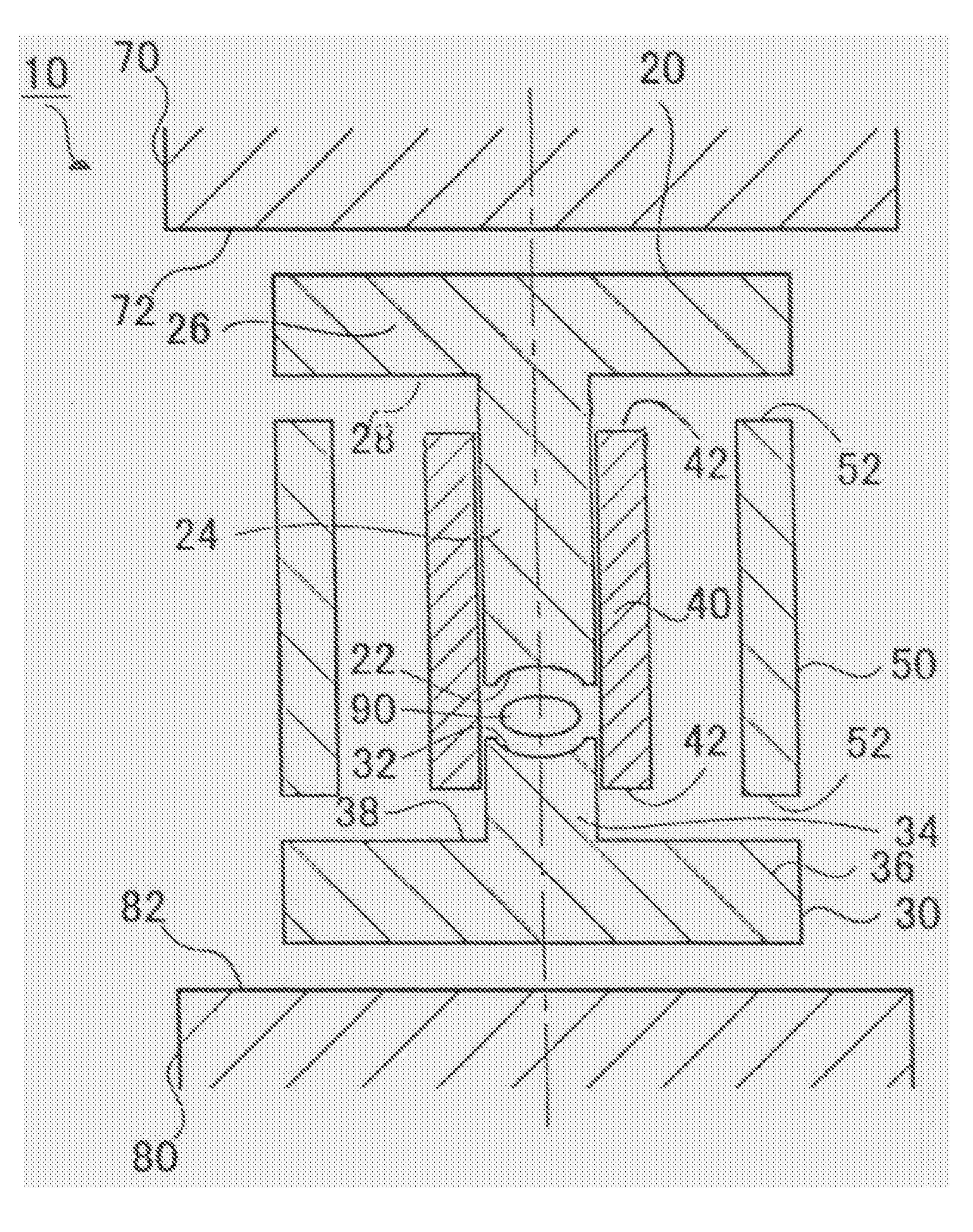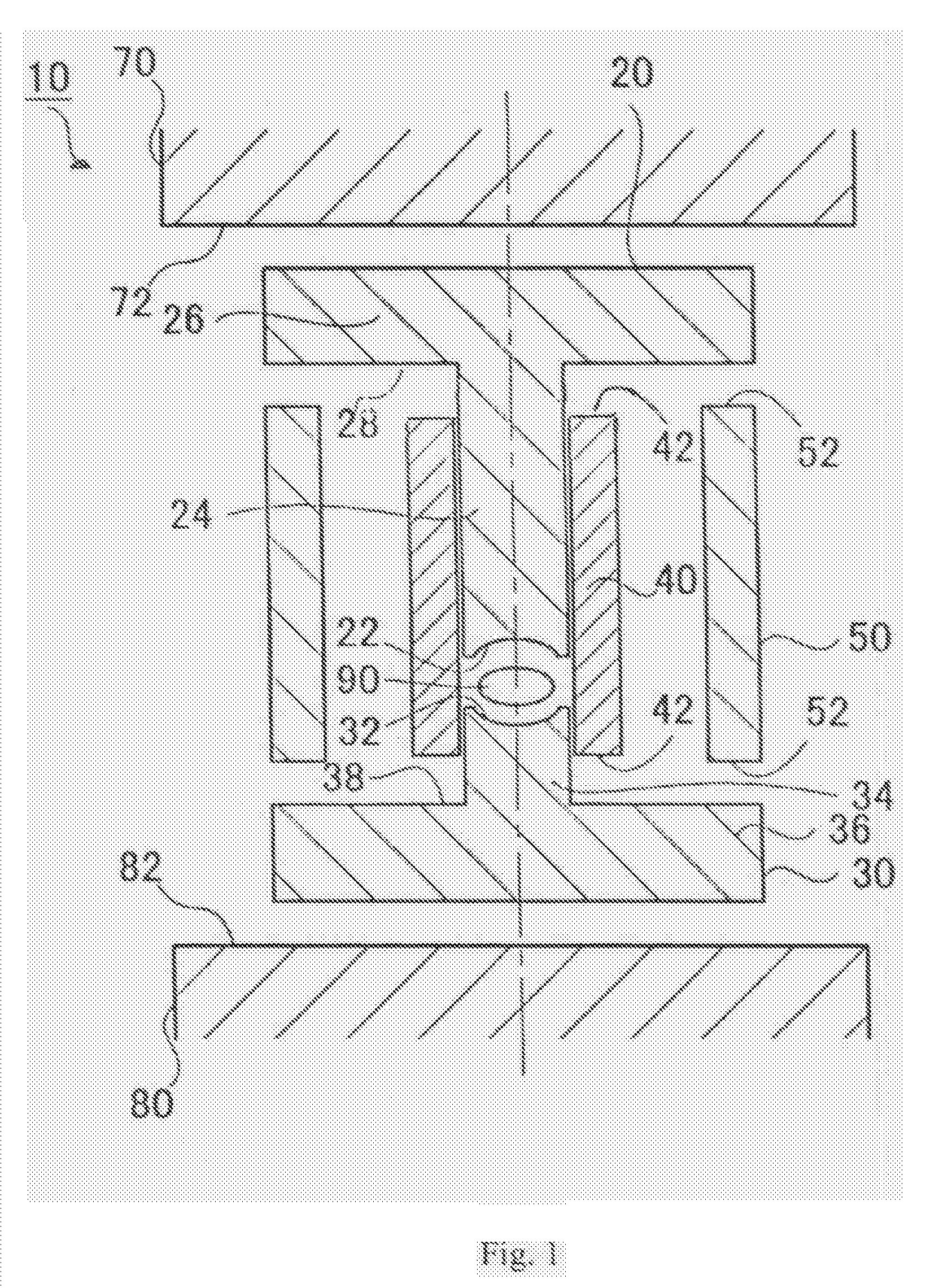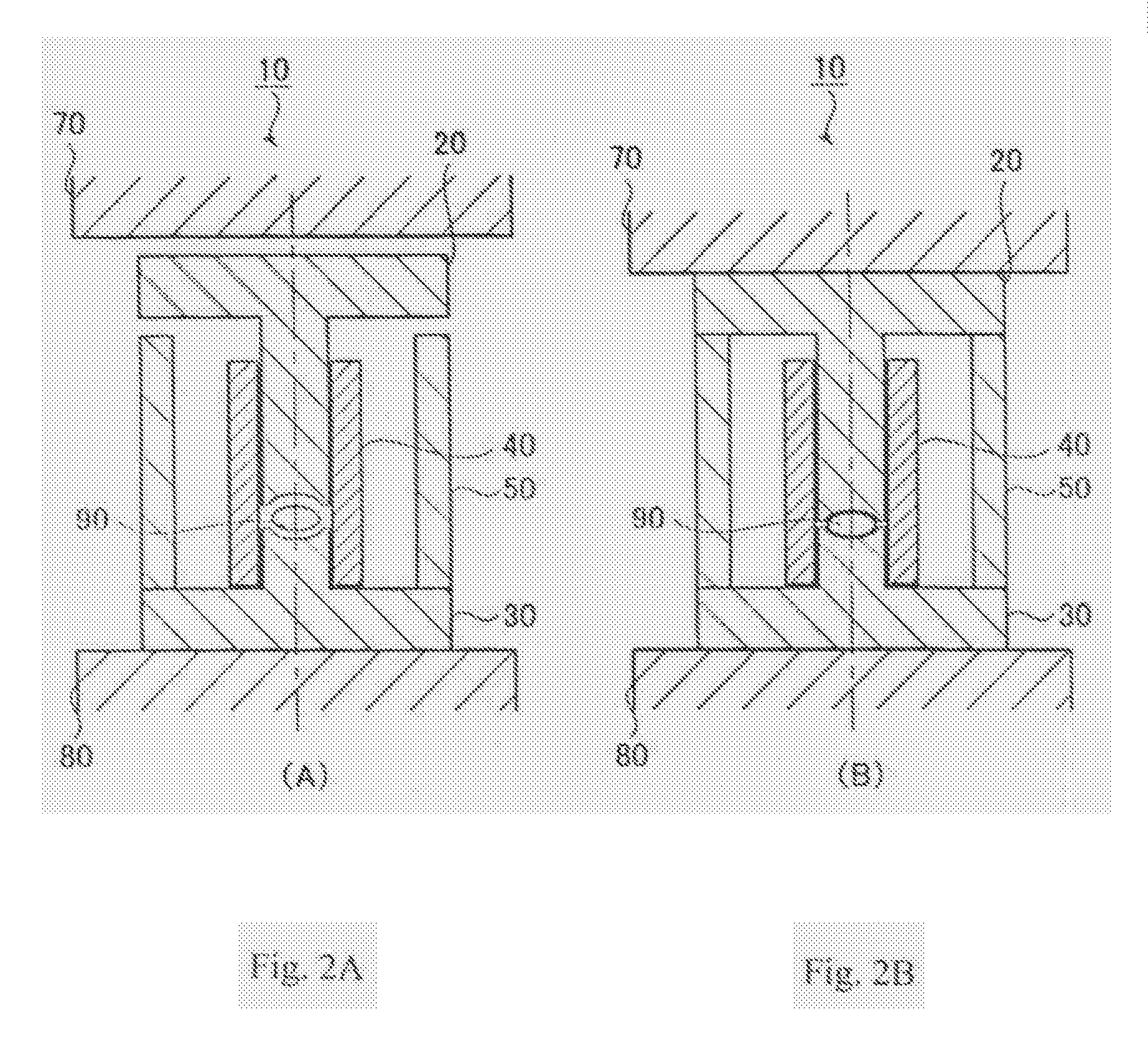Optical Element Molding Device
a molding device and optical element technology, applied in the field of optical element molding devices, can solve the problems of affecting the structure easily induces deviations on the optically functional surfaces, and the lower mold elements greatly affect the aberration of the molded optical elements, and achieves excellent maintenance properties
- Summary
- Abstract
- Description
- Claims
- Application Information
AI Technical Summary
Benefits of technology
Problems solved by technology
Method used
Image
Examples
embodiment 1
[0021]FIG. 1 shows an exploded cross-sectional view of the optical element molding device of Embodiment 1 of the present invention. The molding device 10 shown in FIG. 1 includes a pair of upper and lower mold elements 20 and 30, a first cavity mold element 40, a second cavity mold element 50, and a pair of upper and lower pressuring plates 70 and 80. Hereinafter, characteristics of each component contained in the related optical element molding device 10 are described.
[0022]Each of the upper mold element 20 and the lower mold element 30 includes a pedestal, 26 and 36, respectively, and a shaft, 24 and 34, respectively, projecting from each pedestal. The pedestals 26 and 36 each have a transverse section that is larger than those of the shafts 24 and 34, respectively. The upper and lower mold elements 20 and 30 have outer surfaces on the shafts 24 and 34 that are inside the first cavity mold element 40 and adjacent the inner surface of the first cavity mold element 40. Flanges 28 an...
embodiment 2
[0036]Next an optical element molding device related to a second embodiment, Embodiment 2, of the present invention is described. FIG. 3 shows a cross-sectional view of the optical element molding device of Embodiment 2 of the present invention. Embodiment 2 is similar to Embodiment 1, and therefore much of its operation may be understood from the previous discussion of Embodiment 1 and FIGS. 1, 2A, and 2B. In Embodiment 2, the same reference symbols as in Embodiment 1 are used for components that may be the same as in Embodiment 1, and components that are different but correspond to components of Embodiment 1 are referenced by the same reference symbol with a prime symbol added, as shown in FIG. 3. The optical element molding device 10′ of Embodiment 2 is different from Embodiment 1 in that the second cavity mold element 50′ comes into contact with only one of the upper mold element 20′ or the lower mold element 30. FIG. 3 illustrates the situation of the second cavity mold element...
embodiment 3
[0044]Next, an optical element molding device related to a third embodiment, Embodiment 3, of the present invention is described. FIG. 5 shows a cross-sectional view of the optical element molding device of Embodiment 3 of the present invention. Embodiment 3 is similar to Embodiment 1, and therefore much of its operation may be understood from the previous discussion of Embodiment 1 and FIGS. 1, 2A, and 2B. In Embodiment 3, the same reference symbols as in Embodiment 1 are used for components that may be the same as in Embodiment 1 and components that are different but correspond to components of Embodiment 1 are referenced by the same reference symbol with a prime symbol added, unless the components have been previously referenced with a prime symbol with regard to Embodiment 2, in which case the same reference symbol with two prime symbols added are used for Embodiment 3. As shown in FIG. 5, the optical element molding device 10″ of Embodiment 3 is different from Embodiments 1 and...
PUM
| Property | Measurement | Unit |
|---|---|---|
| optical function | aaaaa | aaaaa |
| weight | aaaaa | aaaaa |
| density | aaaaa | aaaaa |
Abstract
Description
Claims
Application Information
 Login to View More
Login to View More - R&D
- Intellectual Property
- Life Sciences
- Materials
- Tech Scout
- Unparalleled Data Quality
- Higher Quality Content
- 60% Fewer Hallucinations
Browse by: Latest US Patents, China's latest patents, Technical Efficacy Thesaurus, Application Domain, Technology Topic, Popular Technical Reports.
© 2025 PatSnap. All rights reserved.Legal|Privacy policy|Modern Slavery Act Transparency Statement|Sitemap|About US| Contact US: help@patsnap.com



